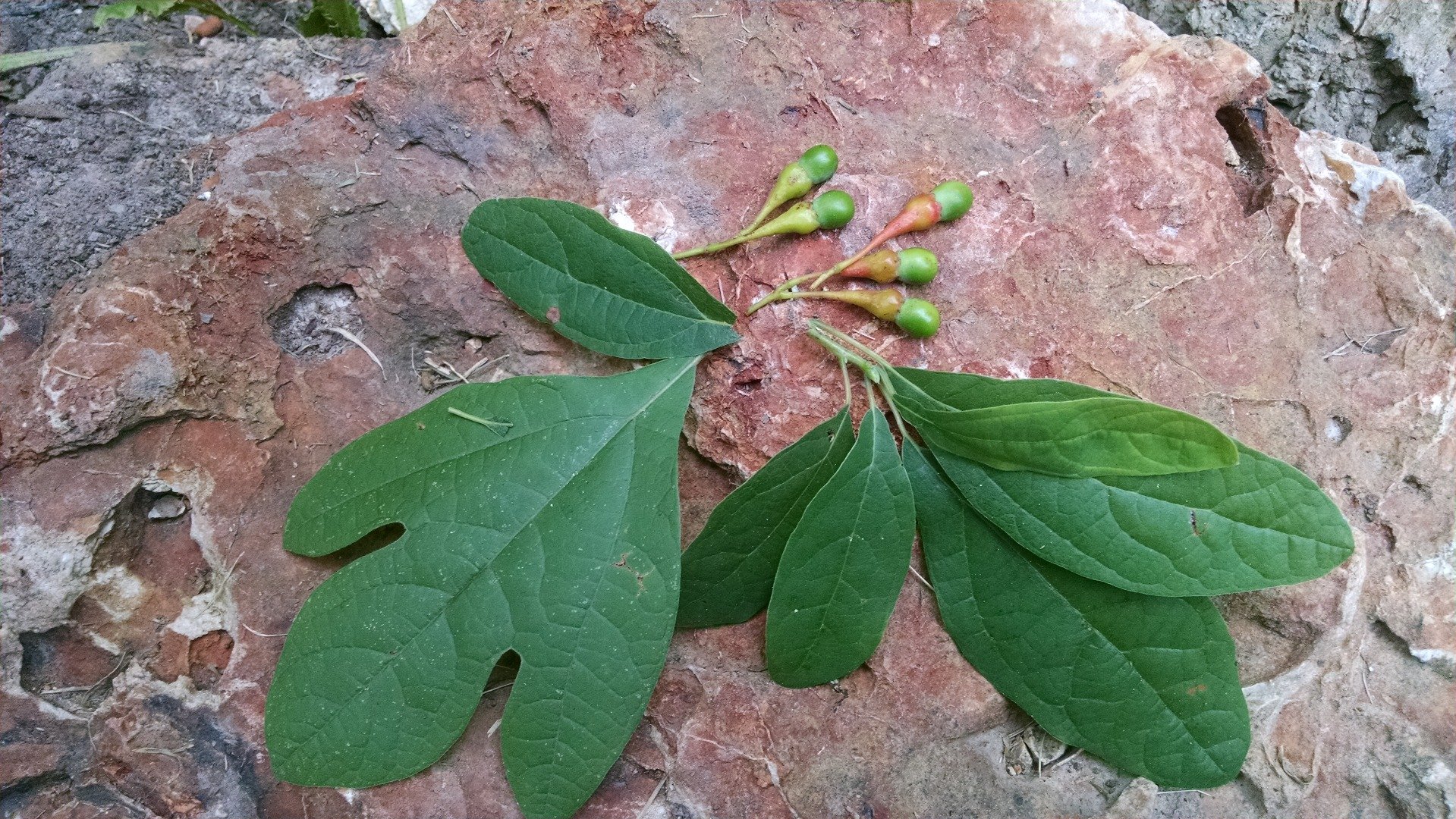
Like some other plants we all know about, Sassafras is another common plant that has a bad reputation in some circles. Some plants may deserve it, but others are questionable. The purpose of my posts are simply to inform people about plants that may be all around us, so that, if they needed to, for one reason or another, people could be aware of a plant that they could consume successfully, gain nutrition and nourishment, and not die in the process. This post is designed to spark a potential interest in you for edible outdoor plants so that you can do some research and maybe find some locals experienced in the native wild edible plants in your area. I am not an expert, just a man on a journey who has been blessed by some plants along the way. Since I am almost done eating all the stems and leaves that I removed from the trees to make the photographs for this posting, and since I am finishing the glass of tea now, Sassafras has passed my edibility test.
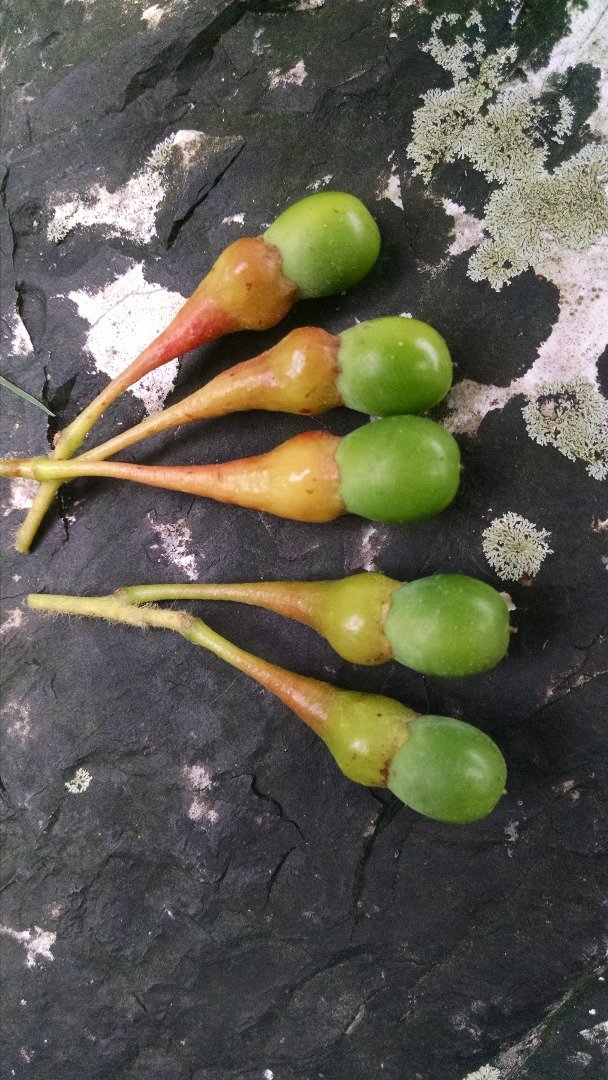
The only part of the plant in apparently really in question is the seeds. Now the guy that I first heard about Sassafras from told me the whole plant was edible, so that was my frame of reference. From that (mis)understanding, I've eaten quite a few of the green seeds as pictured. I'm obviously still alive (think I proved that earlier: @papa-pepper/beyond-a-reasonable-doubt-i-m-not-a-bot-proof ) but who knows what's going on inside me right now. I guess that the government believes that safrole (the compound in Sassafras from which it gets its unique flavor and odor) may be carcinogenic in nature. (Based on consumer warning labels, it looks like entire state of California is carcinogenic now too, but anyways...)
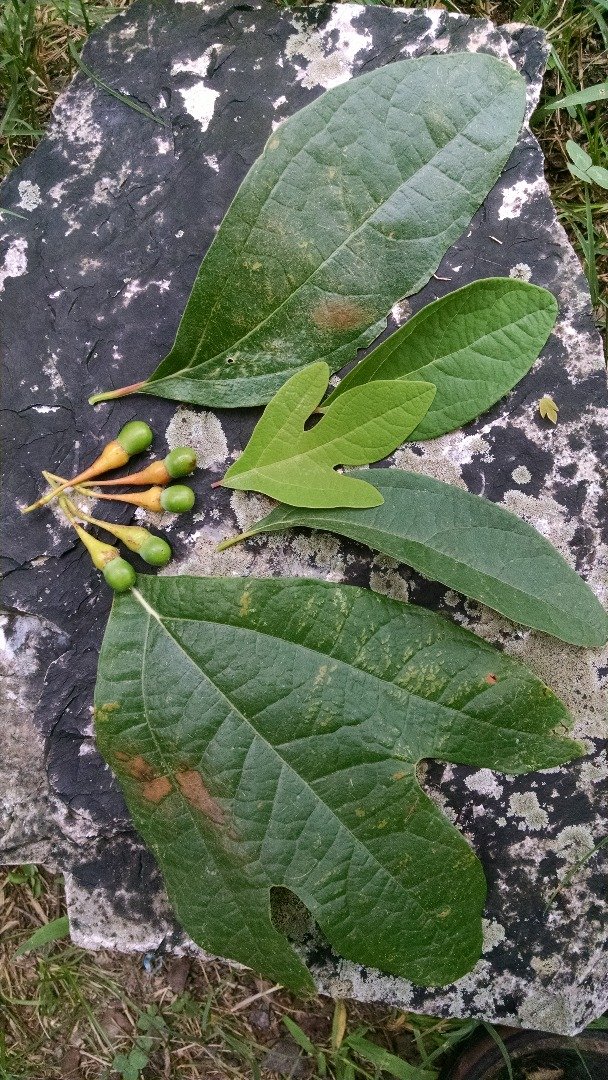
Sassafras, and the safrole contained therein, is where root beer originally got its flavor from. The roots even smell like root beer. However, it's now illegal for companies to make root beer containing safrole, so it's all artificial flavorings these days (not to mention High Fructose Corn Syrup). (Oops, I mentioned it, didn't I?) Soooo anyway, though I've eaten stems, seeds, leaves, bark, and roots, it may have given me cancer, so don't eat the seeds.
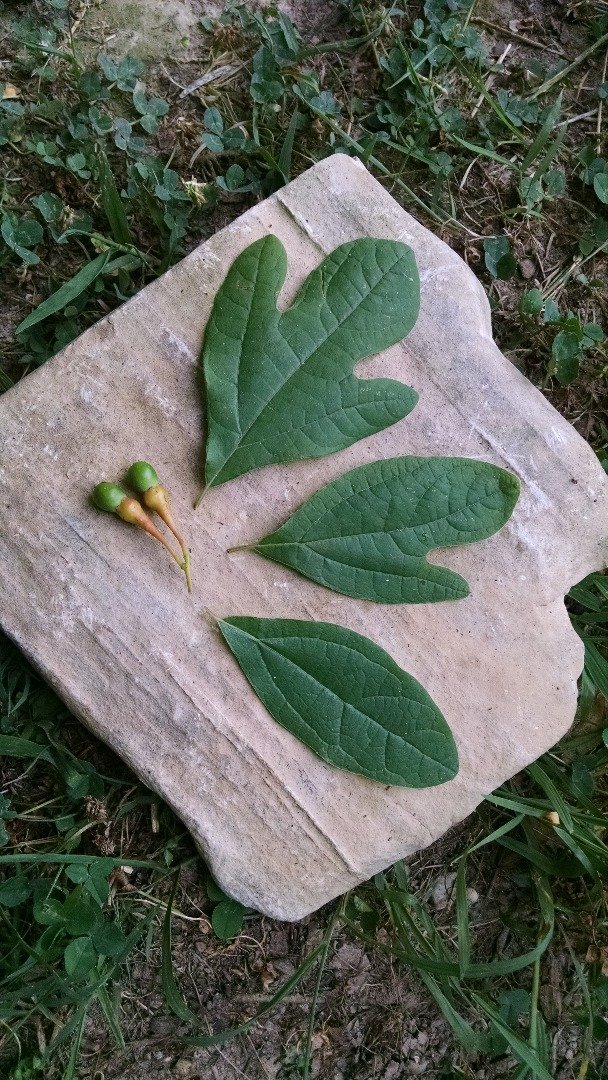
There are many easy ways to successfully identify a Sassafras tree. Since it can vary from a young sapling to a thousand year old tree that's 50 or 60 feet tall, size will not be a good clue. One of the easiest ways, besides noticing the berries, is the leaves. That's usually what tips me off. Notice the three different shapes above. Sassafras has these three leaf shapes usually referred to as three-lobed, mitten-shaped, and oblong or elongated. These varying leaf shapes will all appear on the same tree! I usually notice the three-lobed leaves first, and then crumple one to smell it. Once you've smelled it, you know it, but it is hard for me to describe. Some mention citrus as an option. To be completely sure, uprooting a sapling and smelling the roots is a surefire way for verifying proper identification, due to the root beer scent, but until I made some Sassafras root tea earlier today, I've mostly just munched on the leaves and stems.
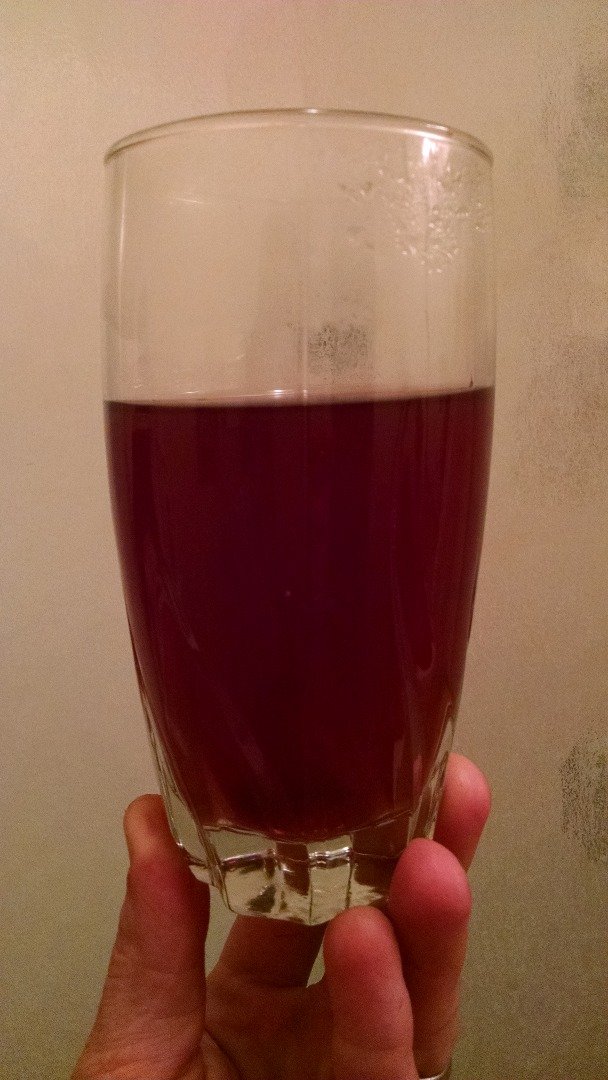
The root tea is definitely pleasant, and is a dark red color. Basically, I just cleaned and boiled the roots to make the tea. It has a root beer flavor to it, which is nice since I've pretty much quit drinking soda, now that it's all High Fructose Corn Syrup. Minus the carbonation and add a little heat, and it's actually quite similar to traditional root beer.
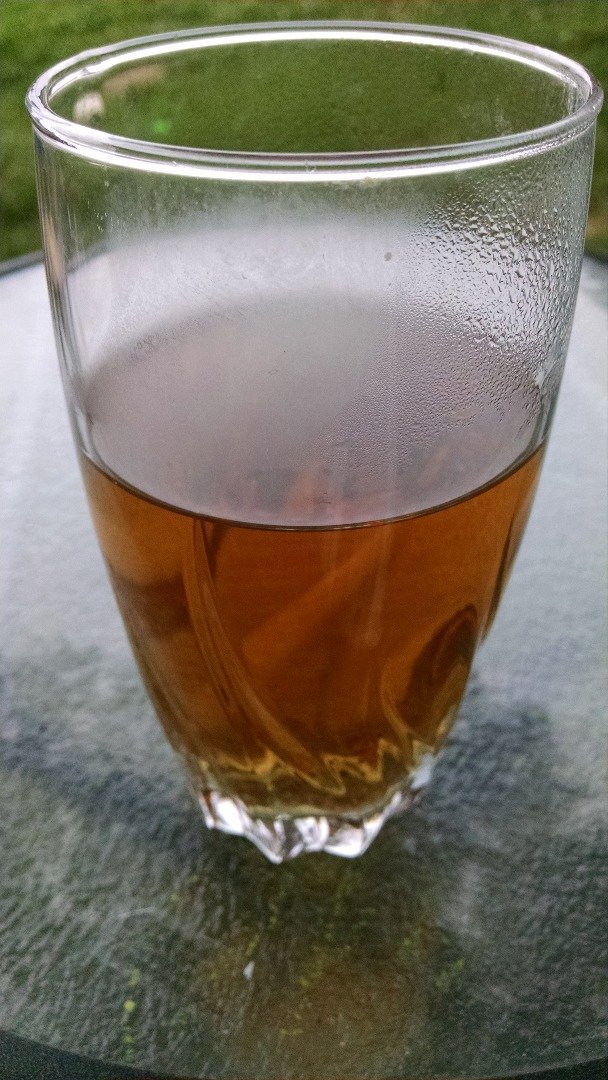
Additionally, I've periodically been drinking tea made from the leaves for a while now, as pictured above. The color is obviously different, and as a drink it really isn't very similar at all, either. First off, it has a slippery and solid-ish feel to it. Secondly, the flavor isn't as strong and does not taste like root beer. Again, an exact description of the taste escapes me, so my apologies. One of my favorite evening teas now is a hand-made blend consisting solely of dried lavender blossoms, licorice root, wild mint, and Sassafras leaves. It is smooth and subtle, yet aromatic with a pleasant aftertaste. Very relaxing.
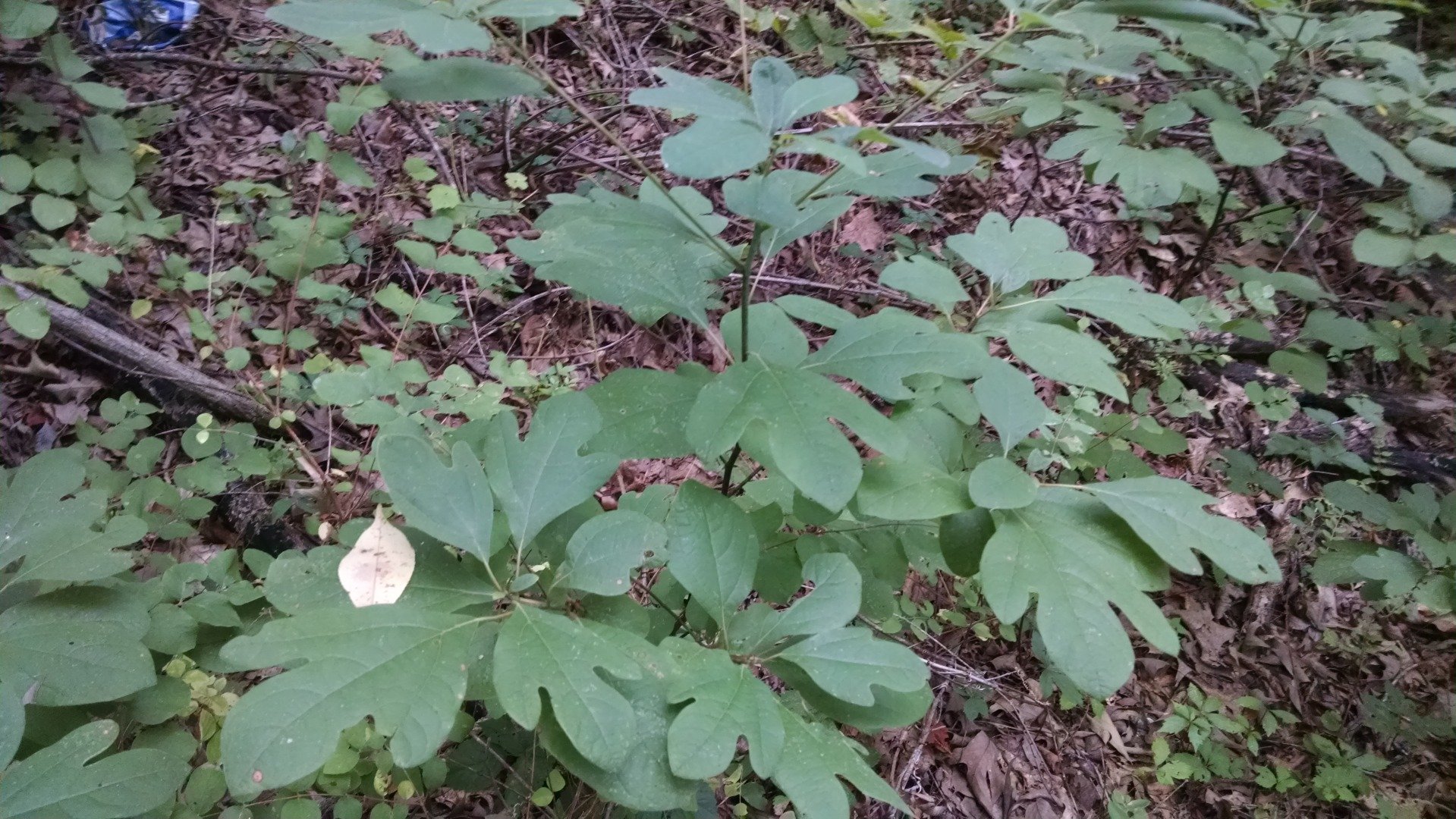
I think that the best Sassafras for munching on are young saplings, like these guys, or the new growth on larger trees. The forest floors around here can be covered in the small trees, and they are delicious fresh. I once came home late and very hungry only to find out that my oldest daughters rabbit, now named "Runaway", had escaped. Well I skipped dinner and went straight to the woods, because daylight was fading. Never did find the rabbit that night, but by the time I got out of the woods, I wasn't hungry anymore. The Gooseberries, Blackberries, and Sassafras had fixed that. I was grazing the whole time I was searching, and though I did not find the rabbit, I found some new patches of Gooseberries and some more Sassafras trees too!
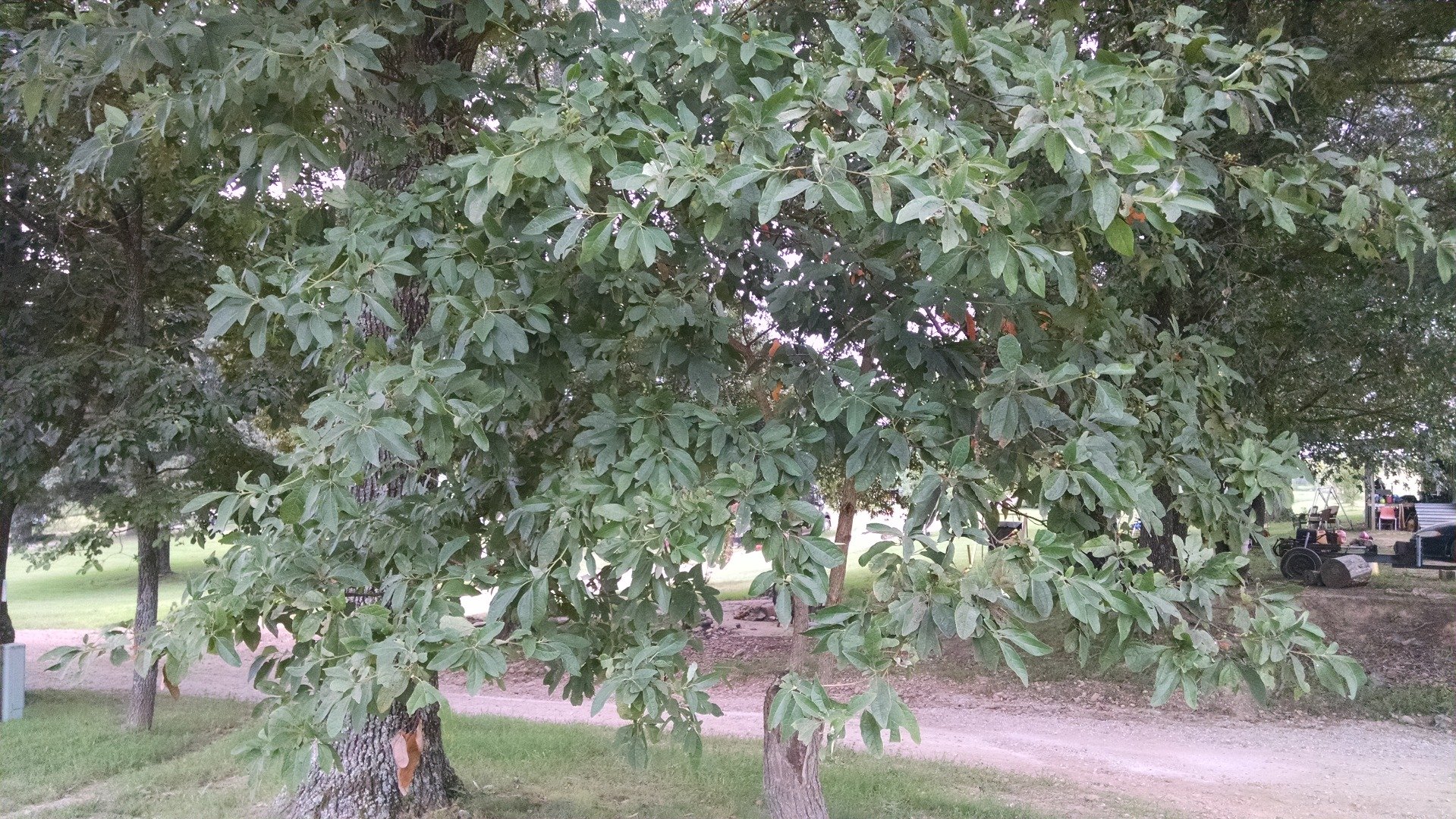
Since there are quite a few of these trees and a lot of young saplings where we are, a quick snack is never far away. I've really only eaten these raw by themselves so far, and enjoyed a few variations of tea from the plant. I guess I've officially given up snacking on the seeds now, and I'll probably have to try the leaves in a mixed salad or a wrap.

Sassafras may be a controversial plant, and it could have some serious side effects. It's out there and you may want to be aware of it, but what you do with it is up to you. For the record, it was a very common food and drink in many ways to many people hundreds of years ago, but it's important to remember that all of them died. (I'm not saying that there is a connection, just that they died, maybe it wasn't even the Sassafras.)
Also, just to make you aware if you never read the introduction to "The Edible Outdoors" @papa-pepper/the-edible-outdoors-intro-and-common-yellow-wood-sorrel here are my rules for "The Edible Outdoors" posts.
Basic Rules for these posts:
I will only post pictures which I have taken myself.
I will eat the plant that was photographed prior to posting.
If the postings cease suddenly, you may want to conclude that I made a mistake and perhaps ingested some lethal vegetation by accident.

